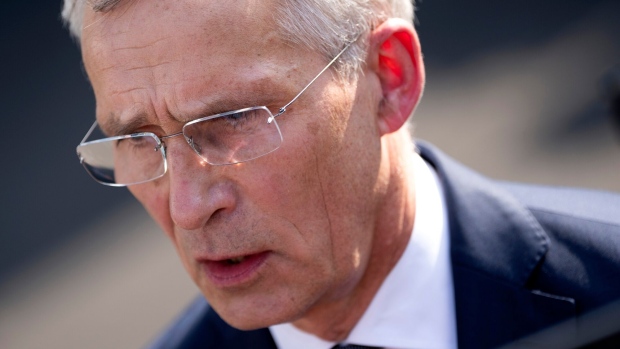Jul 3, 2024
NATO Allies Agree on €40 Billion Funding Target for Ukraine
, Bloomberg News

(Bloomberg) -- NATO allies agreed Wednesday they should aim to provide at least €40 billion ($43 billion) in military aid for Ukraine per year, but refrained from explicit pledges for the years ahead, according to alliance diplomats.
The outcome undercuts their aim of providing Kyiv with more predictability over expected aid. Despite initial enthusiasm for a multi-year funding proposal by outgoing NATO chief Jens Stoltenberg, several allies found it politically and legally challenging to commit to the precise figure for future years.
Instead, the North Atlantic Treaty Organization’s 32 members committed to the €40 billion target for aid, with the caveat that it be reviewed every year, according to the diplomats, who were granted anonymity to discuss closed-door negotiations. The target in the future could decrease or increase, depending on the situation on the battlefield, they said.
Funding for this year is already significantly above that threshold, with the US alone already committing around $60 billion. Under the plan, allies’ donation targets will be based on their gross national income in order to ensure greater burden sharing, one of the people familiar said.
The funding pledge, which still needs to be endorsed by heads of state, will form part of a broader package to be presented to Ukrainian President Volodymyr Zelenskiy at a summit of NATO leaders in Washington next week. The commitments are meant to underscore NATO’s support for Kyiv over the long term and pave the way for Ukraine’s future membership to the military alliance.
Stoltenberg had initially proposed that allies commit to $100 billion over five years, before pivoting to a plan they agree to €40 billion in aid every year, in line with average annual contributions since Russia’s invasion in 2022. Reuters reported earlier that the allies reached an agreement on the funding pledge.
In addition to the aid, NATO will take on a greater role alongside the US-led Ramstein group to identify what military equipment Ukraine needs. The organization will now also coordinate weapons deliveries to allies’ hubs, as well as training for Ukrainian soldiers outside of the country.
NATO allies are still negotiating wording for the leaders’ statement to describe Ukraine’s path toward joining the alliance.
Allies are anxious to avoid the difficult discussions that marred last year’s summit in Vilnius, when Ukraine was pushing for an invitation. NATO ended up deciding Ukraine would join “once allies agree and conditions are met.”
While an invitation is again unlikely this year, the US and Germany have pushed back against describing Ukraine’s membership path to NATO as “irreversible,” and instead want to portray the entire package as a “bridge to membership,” according to people familiar with the matter. The concern has been that the use of the word “irreversible” could suggest that previous commitments would be reversible.
©2024 Bloomberg L.P.








